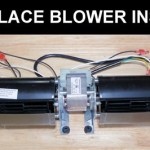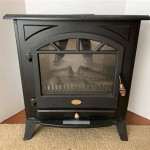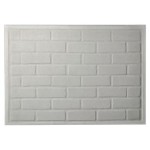Vented Propane Fireplace: A Freestanding Heating Solution
Freestanding propane fireplaces offer a convenient and aesthetically pleasing heating alternative for homes. Unlike traditional wood-burning fireplaces that require extensive chimney systems, propane models offer flexibility in placement and ease of installation. Among the various types, vented propane fireplaces provide a specific set of advantages and considerations related to their operation and safety.
A vented propane fireplace is designed to exhaust combustion byproducts, such as carbon dioxide and water vapor, directly to the outside atmosphere through a dedicated venting system. This venting system is crucial for maintaining indoor air quality and ensuring the safe operation of the appliance. The freestanding design further adds to the versatility of these fireplaces, allowing them to be positioned in various rooms without requiring integration into existing wall structures.
Understanding Vented Systems
The primary distinguishing feature of a vented propane fireplace is its reliance on a chimney or vent to expel exhaust gases. This contrasts with vent-free models, which are designed to burn propane more completely and release minimal byproducts into the living space. Vented systems offer a higher level of safety, as they virtually eliminate the risk of carbon monoxide buildup indoors, provided the venting system is properly installed and maintained.
The venting system itself can take several forms, depending on the fireplace model and the building's construction. Common options include: B-vent systems, which are double-walled metal pipes suitable for vertical venting; and direct-vent systems, which utilize a coaxial pipe where one pipe draws in outside air for combustion while the other expels exhaust. Direct-vent systems are particularly advantageous as they do not draw air from the room, minimizing heat loss and improving energy efficiency.
Proper installation of the venting system is paramount. It should adhere strictly to the manufacturer's specifications and local building codes. Incorrect installation can lead to incomplete combustion, backdrafting of exhaust gases into the home, and potential fire hazards. Professional installation by a certified technician is strongly recommended to ensure safety and optimal performance.
Furthermore, regular inspection and maintenance of the venting system are essential. This includes checking for blockages, corrosion, and leaks. Any damage should be promptly repaired to maintain the integrity of the system and prevent potential hazards. Creosote buildup, a flammable substance that can accumulate in chimneys of wood-burning fireplaces, is not a concern with propane fireplaces. However, other types of debris, such as bird nests or leaves, can obstruct the vent and impede proper airflow.
Advantages of Freestanding Propane Fireplaces
Freestanding propane fireplaces offer several benefits over other heating options. Their portability and ease of installation are key advantages, allowing homeowners to add supplemental heat to a room without major renovations. This is particularly useful in older homes or rooms that lack existing fireplaces or adequate heating systems.
Propane fireplaces provide consistent and controllable heat. Unlike wood-burning fireplaces, which require constant tending and can produce uneven heat distribution, propane models offer precise temperature control through a thermostat. This allows for consistent and comfortable heating, ensuring a more predictable indoor environment. The heat output is typically measured in British Thermal Units (BTUs), and selecting a fireplace with an appropriate BTU rating for the room size is important for optimal efficiency and comfort.
The aesthetic appeal of freestanding propane fireplaces is another significant advantage. Models are available in a wide range of styles and finishes, from traditional designs that mimic the look of wood-burning fireplaces to modern and contemporary styles that complement various interior decors. Many models feature realistic-looking artificial logs and glowing embers, creating a cozy and inviting atmosphere. The availability of different sizes and styles makes it easier to find a fireplace that suits the specific aesthetic preferences of the homeowner.
From an environmental perspective, propane is a relatively clean-burning fuel compared to wood. Propane fireplaces produce fewer emissions and contribute less to air pollution. While propane is a fossil fuel, its combustion produces significantly less particulate matter and greenhouse gases than burning wood, making it a more environmentally friendly option for supplemental heating.
Key Considerations Before Purchasing
Before purchasing a freestanding vented propane fireplace, several factors should be carefully considered. First, the size and BTU rating of the fireplace should be appropriate for the room in which it will be installed. A fireplace that is too small will not adequately heat the space, while one that is too large may overheat the room and waste energy. Consulting with a heating professional can help determine the optimal BTU rating for a given room size.
The cost of operation is another important consideration. While propane fireplaces offer convenient and controllable heat, the cost of propane can vary depending on market conditions and location. Comparing propane prices from different suppliers and evaluating the fireplace's energy efficiency rating can help estimate the overall cost of operation. Energy-efficient models with features like programmable thermostats and variable flame height settings can help reduce propane consumption and lower heating bills.
Safety features are paramount. Look for models that include safety features such as oxygen depletion sensors (ODS), which automatically shut off the gas supply if oxygen levels in the room become too low. This is an important safety mechanism that helps prevent carbon monoxide poisoning. Furthermore, the fireplace should be certified by a recognized testing laboratory, such as UL or CSA, to ensure that it meets established safety standards.
The venting requirements should also be carefully evaluated. The type of venting system required will depend on the fireplace model and the building's construction. Ensure that the venting system can be properly installed and that it meets all applicable building codes. If the home does not already have a suitable chimney or vent, the cost of installing a new venting system can be significant. In some cases, a direct-vent system may be the most practical and cost-effective option.
Finally, consider the ongoing maintenance requirements. While propane fireplaces require less maintenance than wood-burning fireplaces, they still need regular inspection and cleaning. The burners should be cleaned periodically to remove dust and debris, and the venting system should be inspected annually for blockages or damage. Following the manufacturer's recommendations for maintenance can help ensure the fireplace operates safely and efficiently for many years.
The unit should be installed away from any flammable materials like curtains, furniture or paper. Keep a safe distance to prevent fire accident.
Always ensure to consult with certified professionals when it comes to installations, repairs and mantenance.
Understand the cost implications not just for purchase but also for gas supply, maintenance and repairs.

Vantage Bayview Freestanding Direct Vent Gas Or Propane Fireplace Fireplaces By Cameron

Lennox Visions Elite Series Direct Vent Freestanding Stove

Oxford Direct Vent Gas Stove The Place

Enviro S Series Freestanding Gas Or Propane Fireplace Fireplaces By Cameron

Freestanding High Efficiency Direct Vent Gas Fireplaces Inserts Stoves Godby Hearth And Home

Direct Vent Gas Stoves

Lakefield Xl Direct Vent Freestanding Gas Fireplace Stove Kozy Heat

Enviro S Gas Westport Cast Iron Stove

Propane Freestanding Stoves From Stewart S Hearth In Miramichi

Freestanding Gas Burning Stoves Sierra Hearth And Home
Related Posts








